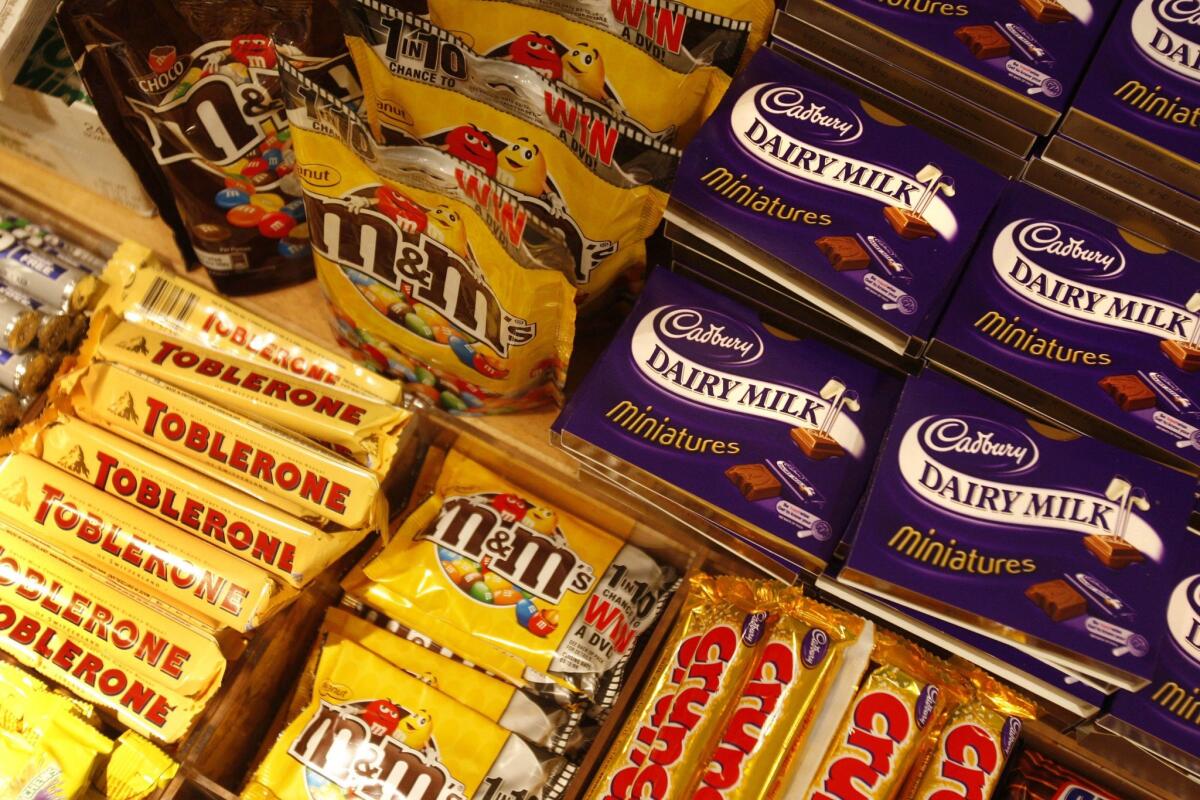Junk food ads on TV tend to target African American and Latino youth

Food companies disproportionately target TV advertisements for unhealthy foods like candy and sugary drinks to African Americans and Latinos, according to a recent study.
One way to fight health disparities and obesity may be to turn off the TV. Food companies disproportionately target television advertising for unhealthy products like candy and sugary drinks to Latino and African American youth, new research shows.
African American children and teens in the U.S. are more than twice as likely to see an advertisement for candy and soda on TV than their white counterparts. And healthier foods that are often seen in television ads for the general population, like yogurt, are unlikely to appear on TV channels targeted to African American and Latino viewers, according to the report. The findings were presented this week at the annual National Conference on Health Communication, Marketing and Media in Atlanta.
âBlack and Latino kids have higher rates of obesity and other diet-related diseases,â said Jennifer Harris, the studyâs lead researcher from the Rudd Center for Food Policy & Obesity at the University of Connecticut. âIf the [food] companies are purchasing more advertising in [ethnically] targeted media, then they could actually be contributing to the health disparities in these communities with their marketing practices.â
Racial disparities in obesity rates continue into adulthood. Among American adults, 47.8% of African Americans are obese, compared with 42.5% of Latinos and 32.6% of whites, according to the Centers for Disease Control and Prevention.
Researchers analyzed the marketing strategies of 267 food brands from 26 major companies (including Hersheyâs, Kraft Foods, and General Mills) that spent over $100 million on advertising in 2013 or that had pledged to only advertise healthier foods to children. Using market research data on how much money and TV airtime each food company used for targeted advertising for Spanish-speaking Latinos, African Americans, and children and teens, the researchers were able to determine what kinds of ads people of different ethnicities and ages were watching.
The researchers determined food companies were marketing to Latinos and African Americans if they advertised on Spanish-language TV and if they aired on channels whose target audience was over 50% African American, respectively. Researchers defined youth-targeted advertisements as those that ran on TV networks that children watched 1.5 times more frequently than adults.
In general, ads for candy, sugary drinks, gum and savory snacks like chips were more likely to target African American and Latino consumers, while ads for healthier dairy, juice, water, fruits and vegetables were less likely to target those populations. âThe same company might be promoting unhealthy foods in the Hispanic community and promoting healthier foods in the general community,â said Amelie Ramirez, director of the Salud America! Latino childhood obesity prevention network and a researcher at the University of Texas Health Science Center at San Antonio.
âOver two-thirds of the Spanish TV ads that are directed to [Latino children] are really pushing fast food, sugary drinks, candy and snacks,â she said. In comparison, only 3% of the ads Latino children and teens saw promoted healthier options.
âWeâre really concerned about this because 39% of Hispanic and Latino children between the ages of 2 and 19 are already either overweight or obese,â Ramirez added.
Though only 18% of the brands focused their advertising toward children and teens, food companies were significantly more likely to direct their youth-targeted ads to African American and Latino audiences than to the general population: 71% of youth-targeted brands focused on African American and Latino communities compared with 47% of brands that advertised mostly to adults. Of the 13 top food brands advertised to African Americans, seven of them -- including Pop Tarts, Doritos and Skittles -- also directed these ads to children and teens.
âNot one of these products would contribute to a healthy diet among young people,â the study authors wrote.
âThis report points towards the fact that you have very high [TV advertising] spending on high-fat, high-calorie, high-sodium foods, which is being concentrated among groups of kids who also happen to be at disproportionately higher risk for obesity,â said Sara Bleich, an obesity expert at Johns Hopkins Bloomberg School of Public Health who was not involved in the study.
âYou get an information environment thatâs coming from this advertising that sends a repeated message to Black youth and Latino youth about what foods are important,â said Shiriki Kumanyika, an epidemiologist at the University of Pennsylvaniaâs Perelman School of Medicine.
These messages work, experts say. Previous research has shown that children and teens have a lot of decision-making power when it comes to family food choices, because parents tend to buy the foods that their kids want to eat.
âParents canât directly defend their children against an onslaught of advertising for unhealthy food,â Kumanyika said.
Instead, the study authors recommend that food companies stop advertising soda, candy and other nutritionally poor foods on TV to children under the age of 14, and that media networks halt the pattern of broadcasting a disproportionate number of ads about unhealthy foods on channels targeted toward Latino and African American audiences.
âThis pattern is really in direct opposition to what the public health community is trying to do,â Kumanyika said.
For more science news, follow me on Twitter @sasha_hl and âlikeâ Los Angeles Times Science & Health on Facebook.






